Tortoise Shell Bamboo Tree
- October 30, 2024
- 0 comment
The Tortoise Shell Bamboo Tree, scientifically known as Phyllostachys edulis ‘Heterocycla’, is a fascinating plant species known for its unique tortoiseshell-like appearance and important role in its native ecosystems.
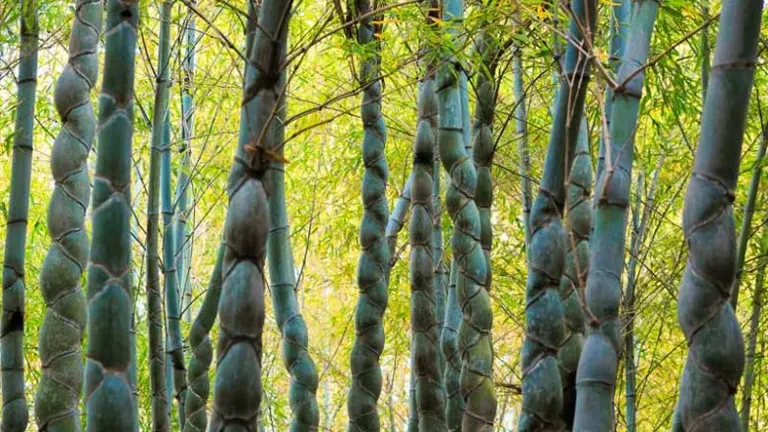
This tree, a variety of the moso bamboo family, contributes significantly to soil stabilization, biodiversity, and the overall health of forested areas. Known for its ability to support local flora and fauna, the Tortoise Shell Bamboo is an important species in both natural and cultivated landscapes.
What Is a Tortoise Shell Bamboo Tree?
The Tortoise Shell Bamboo Tree (Phyllostachys edulis ‘Heterocycla’) belongs to the Poaceae family, which encompasses all bamboo species. This particular bamboo type is notable for its unusually patterned culms, or hollow stems, which resemble the shell of a tortoise, giving it its distinctive name.
Characteristics:
- Leaves: The leaves are long, slender, and vibrant green, often swaying gracefully in the wind.
- Culms (Stems): The stems can grow up to 20–30 feet in height, with a tortoiseshell pattern that adds visual interest.
- Flowers: This bamboo rarely flowers; however, when it does, flowering may occur at intervals of several decades.
- Growth Pattern: Known for its rapid growth, the Tortoise Shell Bamboo spreads quickly, which makes it suitable for erosion control and soil reinforcement.
This bamboo variety contributes significantly to soil health by adding organic matter as it sheds leaves, enriching the soil’s nutrients and improving its structure.
Tortoise Shell Bamboo Species
While Phyllostachys edulis ‘Heterocycla’ is the main species known as Tortoise Shell Bamboo, other closely related species of bamboo contribute similarly to ecosystems. Notable varieties include:
Phyllostachys Edulis (Moso Bamboo)
A close relative, known for its height and economic value in timber and paper production.
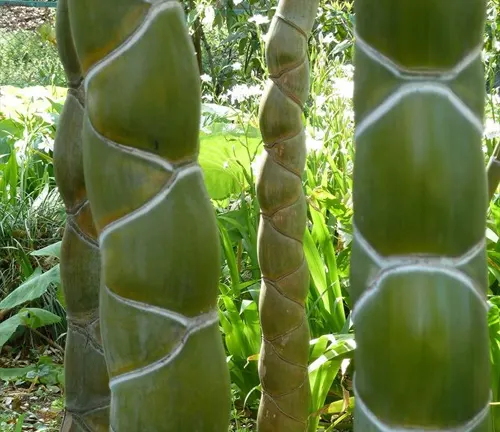
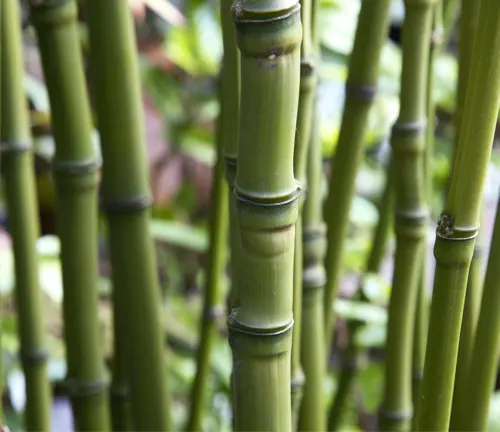
Phyllostachys Aurea (Golden Bamboo)
Popular in ornamental gardening for its striking golden color and dense foliage.
Phyllostachys Nigra (Black Bamboo)
Known for its unique black stems, commonly used in landscaping and ornamental designs.
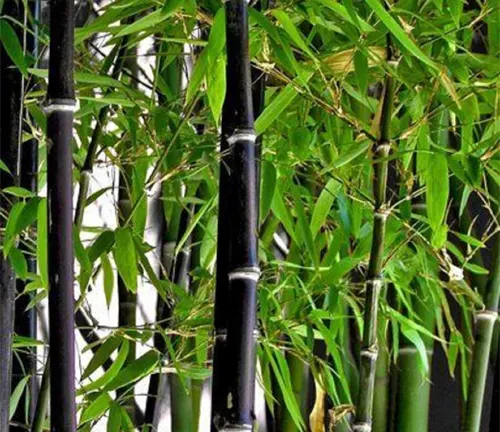
Each of these varieties exhibits slight variations in stem color, size, and habitat preferences, but they all share a common ecological value by stabilizing soil, supporting biodiversity, and offering aesthetic appeal.
Where Do Tortoise Shell Bamboo Trees Grow?
The Tortoise Shell Bamboo Tree thrives in its native environment of East Asia, especially in China and Japan. These trees flourish in subtropical and temperate regions with humid conditions and abundant rainfall, though they can also adapt to slightly cooler or warmer climates with some care.
Habitat and Adaptation
- Climate: Prefers subtropical and temperate climates but can tolerate brief periods of drought.
- Soil: Thrives in well-drained, nutrient-rich soils, though it can tolerate a range of soil types.
- Ecological Role: Its rapid growth and dense root system make it a natural choice for erosion control, helping to stabilize soil in areas prone to landslides and soil degradation.
As a fast-growing bamboo, Tortoise Shell Bamboo provides excellent ground cover, creating a shaded microenvironment that supports various other plant and animal species.
How to Grow and Care for Tortoise Shell Bamboo Tree
Growing the Tortoise Shell Bamboo Tree requires attention to soil, water, and sunlight. Here’s a practical guide for gardeners interested in cultivating this unique bamboo:
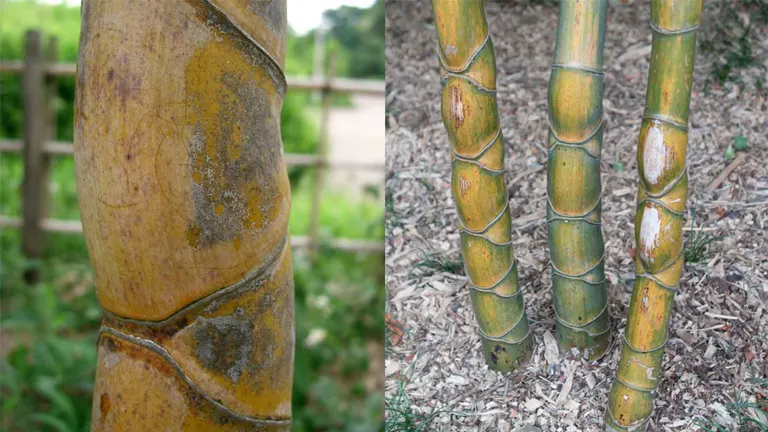
- Soil: Plant in nutrient-rich, well-drained soil with a neutral to slightly acidic pH level.
- Sunlight: It prefers full sun but can tolerate partial shade in hotter climates.
- Water: Regular watering is essential, especially during the first few months after planting; afterward, reduce watering to prevent waterlogging.
Propagation and Maintenance
Propagation is most successful through division. Separate a portion of the bamboo plant’s root system and transplant it to a new location with the same soil and sun conditions. For maintenance:
- Pruning: Trim dead or excess culms to keep the bamboo healthy and promote new growth.
- Pest Protection: Watch for bamboo mites, which may require occasional pesticide applications.
With proper care, Tortoise Shell Bamboo can be an attractive and beneficial addition to a garden or landscape.
Ecological Benefits of Tortoise Shell Bamboo Tree
Tortoise Shell Bamboo plays an essential role in the ecosystem:
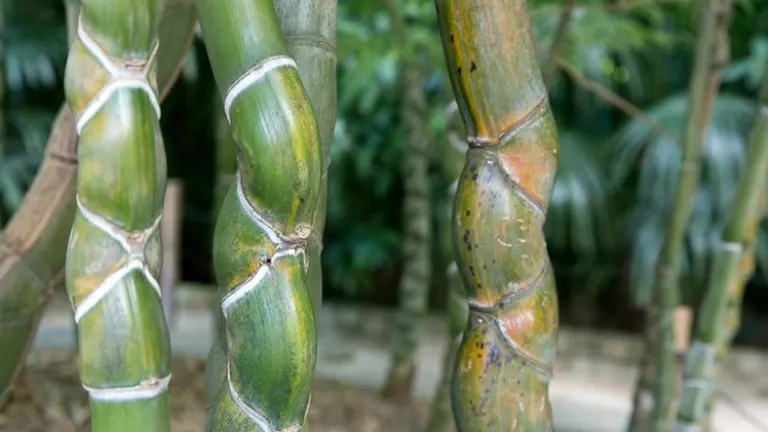
- Soil Stabilization: Its extensive root network helps stabilize soil, preventing erosion.
- Soil Enrichment: Fallen leaves decompose, adding valuable organic matter to the soil.
- Biodiversity Support: Provides food, shelter, and habitat for insects, birds, and other small wildlife, supporting local biodiversity.
Tortoise Shell Bamboo Tree Flowering and Pollination
Flowering in bamboo is rare and sporadic, often occurring only once every 40 to 100 years. When Tortoise Shell Bamboo does flower, the blooms are small, inconspicuous, and lack a strong scent. Despite their rare appearance, these flowers can play a role in local pollination, attracting insects like bees that contribute to the surrounding biodiversity.
Is Tortoise Shell Bamboo Tree Drought-Tolerant?
While Tortoise Shell Bamboo is somewhat drought-tolerant once established, it performs best with consistent moisture. Its shallow roots mean that prolonged drought can lead to stress, so supplemental watering is advised in arid climates.
Tips for Drought-Prone Areas: To grow Tortoise Shell Bamboo in drier regions, consider adding mulch to retain moisture around the base of the plant. Regular but controlled watering can help this bamboo survive periods of limited rainfall.
Tortoise Shell Bamboo Tree and Wildlife Interactions
The Tortoise Shell Bamboo is a valuable plant for wildlife, offering both shelter and a food source:
- Insect Habitats: Provides a habitat for various insects, which in turn attract birds and small mammals.
- Bird Shelter: Many bird species use bamboo thickets for nesting and protection.
- Symbiotic Relationships: Its shade and shelter foster microenvironments that support smaller, shade-loving plants.
Conclusion
The Tortoise Shell Bamboo Tree (Phyllostachys edulis ‘Heterocycla’) is more than just an ornamental plant; it’s a crucial component of the ecosystems where it naturally occurs. Its unique appearance, rapid growth, and ability to stabilize soil make it an ecological asset. By promoting biodiversity, supporting local wildlife, and enriching soil, the Tortoise Shell Bamboo demonstrates the remarkable adaptability and resilience of bamboo species. In nature and cultivated spaces, this tree symbolizes both aesthetic appeal and ecological value, reinforcing why conservation and responsible cultivation efforts are essential for sustaining these unique plants in the wild and in gardens worldwide.
Frequently Asked Questions (FAQs)
- What is the Tortoise Shell Bamboo Tree?
The Tortoise Shell Bamboo Tree (Phyllostachys edulis ‘Heterocycla’) is a unique bamboo variety known for its tortoiseshell-patterned stems, commonly found in East Asia. - Where does the Tortoise Shell Bamboo Tree grow best?
It thrives in subtropical and temperate climates with well-drained, nutrient-rich soils, typically found in China and Japan. - How does the Tortoise Shell Bamboo contribute to ecosystems?
This bamboo stabilizes soil, prevents erosion, supports biodiversity, and provides food and shelter for local wildlife. - Is the Tortoise Shell Bamboo drought-tolerant?
It has moderate drought tolerance once established but benefits from regular watering, especially in drier climates. - Can I grow Tortoise Shell Bamboo at home?
Yes, with well-drained soil, adequate sunlight, and consistent watering, it can thrive in home gardens. - Does the Tortoise Shell Bamboo Tree flower?
Rarely—it may flower only once every 40–100 years, with blooms that attract pollinators when they do appear. - What wildlife does Tortoise Shell Bamboo support?
It provides shelter for birds, insects, and small mammals, creating a microenvironment beneficial for various species. - How do you propagate Tortoise Shell Bamboo?
It’s best propagated by division, separating and replanting parts of the root system in similar soil and sun conditions.
We trust this guide has offered clear insights into the Tortoise Shell Bamboo Tree’s unique features and ecological value. Have experience with bamboo or ideas for boosting biodiversity and soil health? Share your thoughts below to inspire others and promote sustainable practices. Pass this guide along to anyone interested in conserving our natural resources for a greener future.


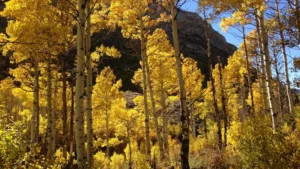
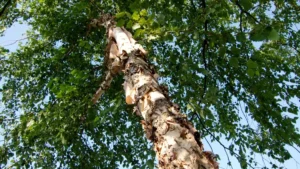
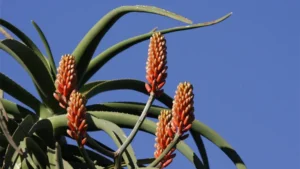
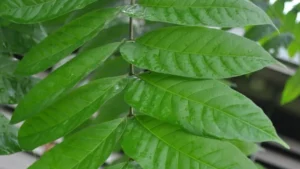

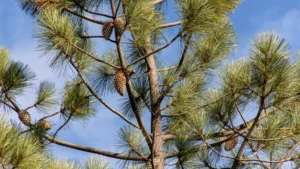
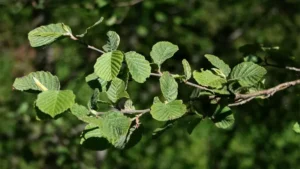
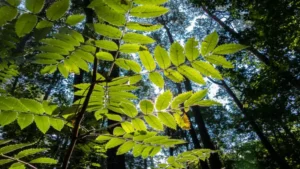
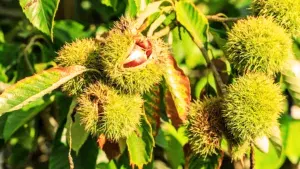
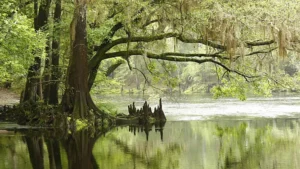
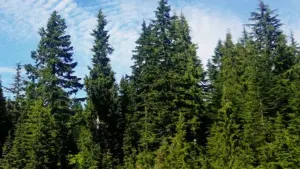
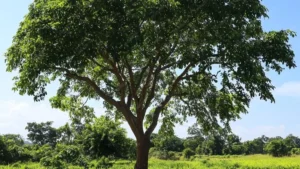
Leave your comment